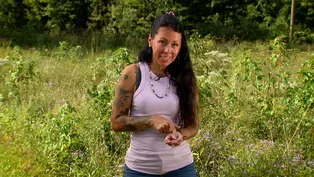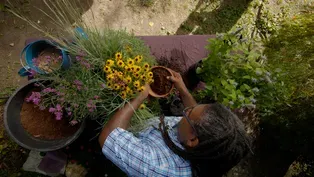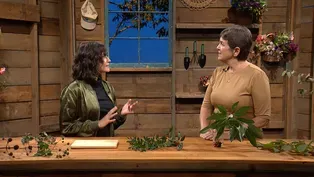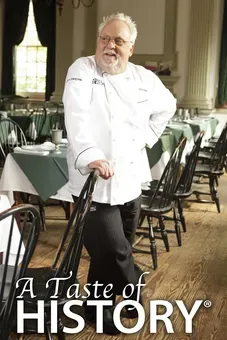Virginia Home Grown
Lawn Conversion
Clip: Season 23 Episode 7 | 8m 49sVideo has Closed Captions
Remove lawn to restore beneficial plant communities
Dr. Robyn Puffenbarger visits a landscape where Devin Floyd of the Center for Urban Habitats guided a homeowner in transforming large portions of lawn into native plant communities. Featured on VHG episode 2307; September 2023.
Problems with Closed Captions? Closed Captioning Feedback
Problems with Closed Captions? Closed Captioning Feedback
Virginia Home Grown is a local public television program presented by VPM
Virginia Home Grown
Lawn Conversion
Clip: Season 23 Episode 7 | 8m 49sVideo has Closed Captions
Dr. Robyn Puffenbarger visits a landscape where Devin Floyd of the Center for Urban Habitats guided a homeowner in transforming large portions of lawn into native plant communities. Featured on VHG episode 2307; September 2023.
Problems with Closed Captions? Closed Captioning Feedback
How to Watch Virginia Home Grown
Virginia Home Grown is available to stream on pbs.org and the free PBS App, available on iPhone, Apple TV, Android TV, Android smartphones, Amazon Fire TV, Amazon Fire Tablet, Roku, Samsung Smart TV, and Vizio.
Providing Support for PBS.org
Learn Moreabout PBS online sponsorship>>We aim to replicate natural plant communities in our installations.
And we do that through use of rigorous data collection and we look at that data and use it to figure out what ecosystems would be most likely to occur on a site and attempt to restore them.
Supporting pollinators is another thing.
And so a great way that we can do that is by ripping up our lawns and putting in native ecosystems like these ones right here.
We're mimicking natural ecosystems here.
This is not a butterfly garden or anything like that.
This is a native ecosystem restoration and we do that in the small scale in the home landscape and it makes a big difference.
>>I would've called this a rain garden but my understanding is it's so much more.
>>In the wild, we happen to see settings like this in natural habitats and it turns out they function a lot better than our traditional rain gardens.
Oftentimes when we're doing research and we're documenting natural systems, we find divots and swales in upland landscapes and if they happen to be full sun, those spots support so much diversity in the plants and they're little patch prairies and we make lists of species that we note there and that's how we know what to plant in these rain gardens that are trying to mimic natural habitat and support wildlife.
>>When I've been doing plantings and converting lawn into what I'm hoping is more like a native pollinator supporting garden, I've probably not been doing what I see here.
I've been smothering grass, planting a few of my native favorites, and then hoping they'll fill in but then I've got a mulch area that I have to spend a lot of time weeding.
So how did y'all plant this?
>>Well, site prep is very important and there are a few really good ways to do it.
The most important thing is to get rid of the existing seed bank.
The way that we do this most often is we strip the sod off and include about an inch of soil with that.
Another way is to smother the ground with cardboard, perhaps with a deep layer of mulch on top of the cardboard.
Takes a lot more time, but it works.
And a new practice that is kind of new into people's awareness is to use small scale prescribed fires to set the tone of the site.
>>Removing those unwanted seeds, the fire is really gonna get after that.
>>Yeah, it also forces germination quickly so you can see the full extent of your problem.
It won't remain lurking in your garden for two years.
You can go ahead and get rid of the problem right away, get those weeds out as they germinate.
But the fire has the effect of taking the plant material and turning it into magnesium and calcium and other cations and putting those back into the soil.
And that has a powerful impact for the plants that you're about to put in.
>>Wow.
>>Yeah.
>>So once the site has been prepped, you've planted the plants, they're growing now, what kind of ecosystem services is this patch gonna provide?
>>The primary service is definitely in the service of supporting biodiversity at the locality.
You're making a node of resilience that kind of echoes out through your neighborhood and beyond.
It just contributes to overall conservation and everybody can do that, even if it's something really tiny, can have an impact.
>>This site looks gorgeous.
There's great texture and differences in heights.
So tell us about the plants that are actually here in this site.
>>This time of the year we're seeing purple, yellow, and white, and that's because we have Black-eyed Susan's, like this, and Orange Coneflower down there and also Goldenrods, that Gray Goldenrod really lighting things up with gold.
But we also have lavenders and purples coming from Blue Mistflower, but also Great Blue Lobelia, those are some of the things we're seeing.
And then we've got these elegant grasses that kind of form a matrix between them.
Upland Bentgrass is in full bloom right now and it's really beautiful.
Bottle Brush Grass is another one.
The white that you see in the background is Thoroughwart, there's also Bushy Aster that's just started to bloom.
It's making some whites and the Asters, Thoroughwarts, the Goldenrods, there's not just one species of each plant.
There's four or five of each of those types of plants.
And that's what we see in the wild.
And what we notice is when we mimic that, the insects are supported doubly, there's more density in the insects and there's more variety.
>>So I'm sure the homeowner is really excited and involved in this project.
Could we meet him?
>>Oh yes, absolutely.
>>Hi Gregg.
>>Hey Gregg.
>>Thanks so much for having us here to your gardens.
Can you tell us a little bit about the transition from lawn to native plants and how you've enjoyed this immense change?
>>Yes.
I frankly had no idea what all of this would be like.
So it has been so enjoyable to see the richness, the diversity, the wildness that comes with all of this.
Where we used to have sort of an ugly patch of yard, we now have something I love to just come out and be in and sit in and watch what's happening in there.
So it's really changed the whole experience.
>>Wow, so Devin, there's a lot going on in terms of the plant diversity over here, out of the "rain garden" and into more of a drier area.
What kinds of plants do we have over here?
>>Yeah, in this area we have plants that are adapted to shade and part sun and intermittently wet and dry.
Those would include Bluemist flower, River Oats, Smooth Blue Aster and Christmas Fern, White Snakeroot, things like that.
>>My understanding is there is support from local government agencies to do this kind of work because of the water quality issues.
How did that play into what happened here?
>>In a big way, so water was our initial issue.
This is inundated with water in heavy rains, so it'll just fill with water and stay here for three or four days.
So we were looking for a solution to that.
And as we approached Devin, he brought in this possibility that there's money available to do this.
So it was the local Soil and Water Conservation District that we connected with.
They have a program that offered 75% financing up to a certain level to be able to do this.
And so we could have not have done what we did at this level without that level of funding.
We didn't have the budget for that.
So we're thrilled that that funding's available and it has launched our beginnings into this.
>>I think many of us think about a garden as an aesthetic, pretty plants, looking nice, maybe some maintenance.
But I think y'all have a very different philosophy.
And would you try to describe that for us?
>>Yeah, I'm happy to share how I've grown into that because I too, I think, I wasn't that connected to plants because it was just what's pretty, but I think as part of this process, there's a whole different way of looking at it.
What has excited me is we're not just planting plants anymore, but we're actually enriching the ecosystem around our house and that I find meaningful and that I want to expand on here.
So I'm a full convert in seeing this different way of holding plants and in our own place that we live and land that we can control to do that.
So I'm very excited about it.
>>That's great.
Yeah and for the homeowner that is beginning this process on their own, it means setting some goals that are a little bit different.
And usually it's aesthetics, straight lines, color, but if you come from restoration ecology, you start with biodiversity, plants and animals, fungi and everything.
And it just means taking some attention off of what we need and think about what the system and its plants and animals might need.
And then asking questions about what those things are and learning.
And it is a lifelong learning process which is part of the beauty of it.
>>Well, it's just a gorgeous landscape to have.
I'm so inspired by the density of planting and what I've learned about how to transform grass into a native planting with lots of biodiversity.
Thank you so much for hosting us today.
This has just been a wonderful learning experience.
>>Yeah, thank you for having me.
>>Thrilled to have you.
>>Thanks.
>>Yeah, thanks.
Video has Closed Captions
Learn how native plants feed wildlife to create healthy ecosystems! (26m 46s)
Video has Closed Captions
Fall wildflower seeds bring early spring color (2m 19s)
Video has Closed Captions
Discover native plants to feed people and wildlife (7m 49s)
Native Plants for the Landscape
Video has Closed Captions
Discover native plants for the home landscape (6m 19s)
Providing Support for PBS.org
Learn Moreabout PBS online sponsorshipSupport for PBS provided by:
Virginia Home Grown is a local public television program presented by VPM

















